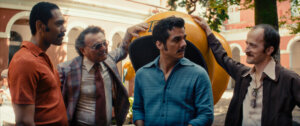Features
Winnipeg and Israel

La vie se rétracte ou se dilate à proportion de notre courage.
Anaïs Nin (1903 – 1977)
By Dr. DAVID HOULT Israel has come of age among the nations of the world. After almost two thousand years of yearning, it can now join the ranks of those that ply power and pain. It is an odd conceit for most of us, for we imbibed so thoroughly from childhood the notions of Jewish vulnerability, suffering and solidarity, the need for self-sufficiency and circling the wagons when attacked. The foundation of a Jewish state came as the Great Hope, a shining star, the salvation from the wreckage of the Holocaust: a Jewish liberal democracy with a military having sterling and stirring ideals standing alone in a rough Middle-East neighbourhood. It appeared to many to be a miracle, and Judaism intertwined with Zionism and state to create a pinnacle of pride and pilgrimage – a tool of God to promote Their divine scheme, and to initiate the return of the Jews to the land They promised to Abraham, Isaac and Jacob.
But now, many of us are troubled. We fear deep down that Israel has gone astray, but are scared to confront the possibility, scared to give The Enemy ammunition if we say anything. So in our pain, we punish those who give even a hint of voicing dissent and fall back on our conceit. We defiantly, and somewhat desperately, have declarations of loyalty and synagogue security committees to keep traitors and Enemies out of our holy places, continue to sing Hatikvah, pray for the IDF and are hyper-vigilant for any sign of anti-Semitism. Underneath though, the stress born of dichotomy grows as we watch the apocalypse that is Gaza, massive demonstrations in Tel Aviv, Jew attacking Jew in Ra’anana, and settlers in the West Bank strutting, scaring, slinging stones and even slaying.
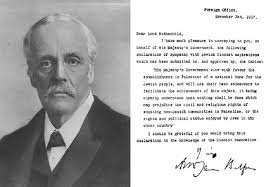
Politically, the seeds of our distress can be traced back over a hundred years to the Balfour Declaration. Based on the anti-Semitic assumption that Jews had great financial clout, it was one long, carefully crafted, vague and contradictory sentence (67 words) designed to enhance British influence in the Middle East. Zionists seized upon the ambiguous phrase “national home for the Jewish people” but carefully ignored the clause “… it being clearly understood that nothing shall be done which may prejudice the civil and religious rights of existing non-Jewish communities in Palestine …”. (Notably, nothing about political rights was included.) Soon, even President Roosevelt was declaring that “Palestine must be made a Jewish State”. Unsurprisingly, there was vocal opposition from most of the local inhabitants (over 90% Arab) and the situation quickly proved untenable. One British historian1 has declared that “measured by British interests alone, [the declaration was] one of the greatest mistakes in [its] imperial history.”
When the British threw up their hands and withdrew from Palestine, the United Nations proposed a partition of the land; the Arab League strongly objected and when the State of Israel was declared in 1948, as every Jewish child knows, the War of Independence began. But by the end of the war, Israel had triumphed; it held about 78% of Palestine and about 750,000 inhabitants had become refugees, a figure confirmed by many Israeli historians. Notwithstanding the details of how they had been exiled, they were not allowed to return. They were scapegoats sent into the wilderness for the sins of the Germans, and it is this refusal that laid the essential foundation of ethnic Jewish statehood – a Jewish majority. And that majority increased: by 1951, the population of Israel was expanded by the immigration of 700,000 Jews, some, ironically, expelled from Arab states in retaliation, thereby enhancing the ethnic imbalance.
I once asked a Palestinian attendee at the Nobel Prize ceremonies in Stockholm for how long her people would try to get their homes and land back and her bitter response was “For ever!” My response was “A bit like we Jews.” But stop for a moment of empathy. In the Talmud, Hillel says: “Don’t do to your neighbour what you wouldn’t have him do to you.” Those 750,000 people suffered the same fate as many Jews under the Romans, traumatised and wretched, filled with hate, anger and despair. But it was war and those sort of rules don’t apply, do they? Do they? For in the aftermath of the Holocaust, Jews were in no mood for the niceties of Torah compassion and empathy: a Jewish state was desperately needed. So what if we didn’t let them back in? Their leaders collaborated with the Nazis, didn’t they? And so the seeds of catastrophe were planted.
If we fast forward, thanks to further wars instigated and lost by the Arabs, Israel now controls almost the whole of what was once Palestine. However, notwithstanding the further exodus of refugees (numbers vary), Jews are no longer in the majority and the presence of so many Palestinians in the West Bank and Gaza represents a huge obstacle to the re-creation of “the promised land”. This is a problem that many in their heart of hearts would love to see go away – but how? By fair means or foul?
Thus we come to the latest attempt to punish Israel which, I believe, is succeeding beyond Hamas’s wildest dreams. Why do I say that? Because Israel’s reaction to Hamas’s attack can be shown to violate its own historical and religious ethics and guidelines for the conduct of war. It places itself, by its own standards, firmly in the wrong and as a result, the nation is tearing itself apart and taking the Diaspora with it. To take just one example, from the Rambam2:
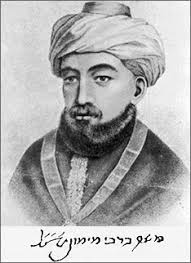
“When a siege is placed around a city to conquer it, it should not be surrounded on all four sides, only on three. A place should be left for the inhabitants to flee and for all those who desire, to escape with their lives.” Or how about the next verse: “We should not cut down fruit trees outside a city nor prevent an irrigation ditch from bringing water to them so that they dry up”? In other words, confinement and starvation are out as tactics of war for Jews.
There is, however, a far more basic, ancient and raw imperative, and that is lex talionis: “An eye for an eye …”. It is found in several places in Torah and also in the earlier Code of Hammurabi. (If you are ever in Paris, do see the stunning Hammurabi stele in the Louvre.) The Pharisees maintained that this law was not to be taken literally and referred to appropriate financial compensation. However, let us be gruesome and take it literally. On one side of the scales of justice we have the killing by Hamas of 1,195 people, the taking of 250 hostages, dozens of rapes and sexual assaults and immeasurable anguish, trauma and misery. What shall we place on the other side of the scale? Let us start with the report by the Associated Press that somewhere between three to four thousand Gazan children have suffered amputations, sometimes without anaesthetics. Meanwhile, the Gazan Health Ministry has released the names of 5,000 children under the age of six who have been killed. Are children The Enemy? We must also add to the balance the thousands of adults who have died and the hundreds of thousands suffering without shelter. We are commanded in the Torah “Justice, justice you shall pursue”. Even if the numbers are exaggerated, is the maiming and killing of children justice? What a wonderful way to create a new generation of terrorists thirsting for revenge!
There are those who claim that the Palestinians are part of the seven biblical nations that Joshua was commanded to wipe out. However, this claim was put to rest as long ago as 100 CE when Rabbi Yehoshua declared that the “seven nations” were no longer identifiable.
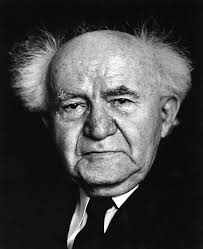
Inconveniently, David Ben-Gurion and Yitzhak Ben-Zvi, in a book published in 19183, even believed that the Palestinian peasant population (fellahin) was descended from the ancient biblical Hebrews, and there is some genetic evidence to support this position. Nevertheless, in 2007, Mordechai Eliyahu, the former Sephardi Chief Rabbi of Israel wrote in a letter to Prime Minister Olmert that4 “an entire city holds collective responsibility for the immoral behavior of individuals. In Gaza, the entire populace is responsible because they do nothing to stop the firing of Kassam rockets.”. His son, the chief rabbi of Safed, wrote: “If they don’t stop after we kill 100, then we must kill a thousand. And if they do not stop after 1,000 then we must kill 10,000. If they still don’t stop we must kill 100,000, even a million. Whatever it takes to make them stop.” Only now, however, have a few Gazans had the great courage to protest Hamas, an organisation that in the past has attacked, abducted, tortured and murdered those who stand up to them, including members of the Palestinian Authority5. Would you or I risk torture and death to confront such rulers? I doubt I would have the courage. Would you? Thus does evil ever flourish.
Let us be clear: Gaza is controlled by a vicious fundamentalist movement that in its charter calls for the destruction of Israel. But the more the Gazans are carpet bombed and killed, the more Hamas will gain supporters – young men who have seen mothers, fathers, sisters, brothers and cousins maimed and dismembered and want revenge. Quite apart from questions of morality, the annihilation is just plain dumb!
As the years of this century pass, how shall we possibly believe a new “promised land” could materialise? It would take a new Sodom and Gomorrah. The Arab states have learnt their collective lessons regarding military force and Israel is now Goliath to their slingless David. So, unless Israel feigns weakness (and notwithstanding Iran), it is highly unlikely that a new war will arise to give a pretext for expelling millions from the West Bank. Instead, harassment seems to be the method du jour as new settlements are built, land is appropriated and people are slowly forced into cities and refugee camps, or to other countries such as Canada – to Winnipeg, even. Of course Ben-Gurion’s “peasants” are going to strike back! Is harassment an honourable tactic? Is this loving one’s neighbour as oneself? Ah, but they aren’t neighbours you see, they are The Enemy, for they ambush innocent people and kill pregnant women6. Thus does evil ever flourish.
So here, in a distant country, we sit and watch, a community torn in two. Where do our loyalties lie? As you may have gathered from my quotations, I am a religious Jew who believes that our ethics must be derived from Torah and Talmud. I am a member of a synagogue, but a synagogue that refuses to admit anyone who is perceived to be The Enemy, and a member of a community that states “With Israel, For Israel. Always.” Where do my loyalties lie? Where should they lie? For me, there can no doubt – unequivocally with a Higher Authority, an Authority that demands at the pinnacle of Torah, slap dab in its middle, that I must love my neighbour as myself. That means gently arguing with the racist down the street, having kind words for the Indigenous family pushing back against subtle discrimination and trying to console the Palestinian who is mourning the death of his nephew in Gaza. But there is more.
The Talmud tells us7: “If (anyone) is in a position to protest the sinful conduct of the people of his town, and he fails to do so, he is apprehended for the sins of the people of his town. If he is in a position to protest the sinful conduct of the whole world, and he fails to do so, he is apprehended for the sins of the whole world.” Thus I protest the actions of my synagogue in keeping people out, I protest the actions of my community and I protest the actions of Israel because it is part of this world and it is sinning. It really is that simple – see wrong, protest, for God’s sake (literally), rather than keeping quiet and putting support for Israel first. Torah has an old-fashioned word for such misguided loyalties – idolatry. To quote Abraham Joshua Heschel: “God is not nice. God is not an uncle. God is an earthquake” that shakes us out of our complacency and challenges us first and foremost to reason – to think and analyse, not just feel, using Torah as our guide.
But there is yet more, and it is something we can do in Winnipeg. The same Talmud also states8: “Who is richest of all, …. Some say: One who can turn an enemy into his friend.” And how does one do that? Surely, there can only be one way to begin: by talking – by talking with The Enemy right here in town with empathy for their suffering. That means striving not to be ruled by fear, but taking one’s courage in both hands, being prepared to be made very uncomfortable, to confront other people’s truths. I do not have to agree, I do not have to like it, but I do have to listen. And one day, just possibly, there might be areas of agreement, even friendship, where the seeds of reconciliation are irrigated and can grow and bear fruit, for if God is prepared to reason with us (Isaiah 1, 18), surely we can reason with one another? Can’t we?
___________________________________________________________________________
David Hoult, a physicist who is one of the original developers of the MRI, is the recipient of numerous awards, including the community’s Shem Tov award for his work in helping secure kashrut in the city. He lives in Winnipeg with his wife and children.
1 Monroe, E. Britain’s Moment in the Middle East, 1914–1971. Johns Hopkins University Press (1981).
22 Mishneh Torah, Kings and Wars 6
33 Erets yisroel in fargangenheyt un gegenvart: geografye, geshikhte, rekhtlekhe ferheltnise, bafelkerung, landvirtshaft, handl un industri (The land of Israel past and present: geography, history, legal circumstances, population, agriculture, business, and industry), with three maps of the country and eighty pictures of Israel (New York, 1918),
Hebrew translation, 1980, pp. 196–200 (in Hebrew).
44 Wagner M., Jerusalem Post, May 30th, 2007.
55 https://www.amnesty.org/en/latest/news/2015/05/gaza-palestinians-tortured-summarily-killed-by-hamas-forces-during-2014-conflict/
66 https://www.bbc.com/news/articles/cvgq89yd7p7o
77 Shabbat 54b, 20
88 Avot d’Rabbi Natan 23
Features
“Kaplan’s Plot” – newly released novel set in Chicago is both historical fiction and psychological drama
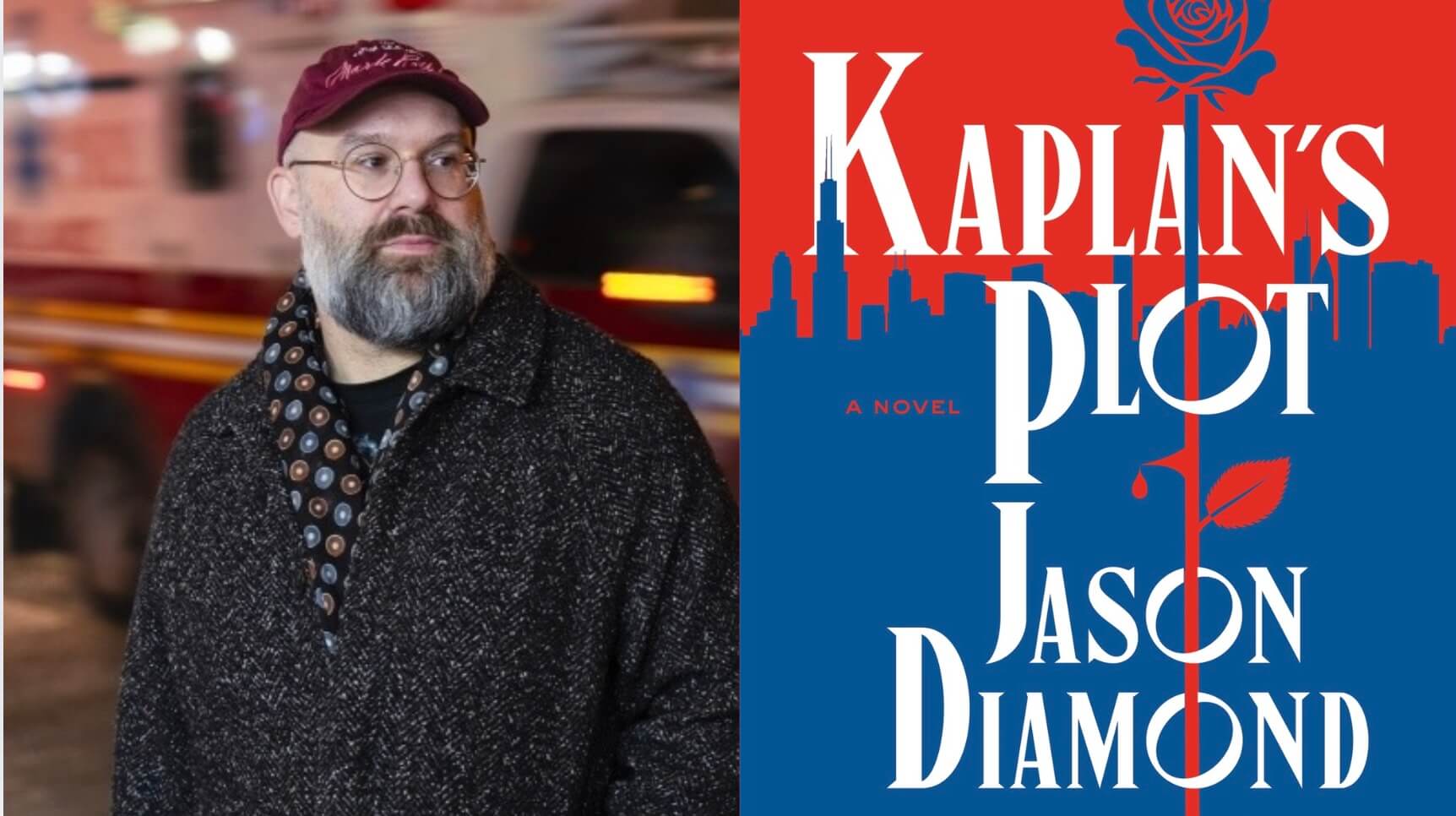
Reviewed by BERNIE BELLAN I had been searching for a new book this summer that would be of particular interest to Jewish Post readers when I came across the title of a new book that had yet to be released, called “Kaplan’s Plot.” It had received quite a bit of buzz on a number of websites that spotlight books that have – at least in part – a Jewish theme, although it still had not been reviewed when I first read about it.
The plot of the book, as it was described in those initial previews, certainly appealed to me, as it was said to combine a story about a Jewish gangster in Chicago in the early part of the 20th century with a modern day story about a man whose life had come completely unravelled and who was forced to return to Chicago to live with his dying mother.
I’ve been a fan of Jewish gangster stories for years, especially ones written by our own Allan Levine – and I’d often published stories about real life Jewish gangsters – or Jewish gangster fighters – as the case may be, in the pages of The Jewish Post & News (also on jewishpostandnews.ca).
Last year, for instance, I wrote a review of a book called “The Incorruptibles,” about efforts by law-abiding Jews in New York City in the early part of the 20th century to fight corruption. You can read my review here: “The Incorruptibles.”
Also, in the past I’ve run stories about Jewish underworld figures who either lived in Winnipeg or had a strong Winnipeg connection. One of the most popular stories ever to appear on our website, for instance (and which is still being widely viewed), is one that was written by Bill Redekopp – a former writer for the Free Press, who had profiled a fascinating Winnipeg bootlegger by the name of Bill Wolchock in his book, “Crimes of the Century – Manitoba’s Most Notorious True Crimes.” You can read Redekopp’s story about Wolchock at “Bill Wolchock.”
Another story that garnered quite a bit of attention when it was first published was Martin Zeilig’s story about Winnipeg-born Al Smiley, which appeared in the March 29, 2017 issue of The Jewish Post & News. The most interesting tidibt in Martin’s story was that Smiley was was sitting beside the notorious Benjamin “Bugsy” Siegel when Siegel was murdered in 1947. That story doesn’t appear as a stand-alone story on our website, but you can find it by downloading the entire March 29, 2017 issue by entering a search through our “Search archive” link for Al Smiley.
One more story that dealt with Manitoba Jewish gangsters (and which also referenced the Bill Wolchock story) was one I wrote in 2023 titled “A deep dive into the lives of some shadier members of our community.” In that story I wrote about a book that was about to be published titled “Jukebox Empire: The Mob and the Dark Side of the American Dream.” It was the story of Wolf Rabin (born William “Wolfe” Rabinovitch), written by his nephew, David Rabinovitch.
All this serves as a very long winded preamble to a review of “Kaplan’s Plot.” I was somewhat disappointed to learn that the characters in the book are all fictitious, since the mobsters are so vividly drawn – although there are very brief references to real-life mobsters, including Al Capone, Meyer Lansky and Charles “Lucky” Luciano, that make you wonder whether some of the other mobsters might also have been real people.
According to information available about the author, Jason Diamond, this is his very first novel – a very impressive debut. He certainly brings to life a very nasty Chicago in the early part of the 20th century.
What makes what Diamond has written an even more admirable achievement is that the plot works both as a riveting mystery and as a thoughtful examination of a mother and son relationship.
The story alternates between a story set in modern day Chicago (in 2023) and another story that begins in Odesa in Ukraine in 1909, but soon moves to Chicago shortly thereafter.
At first, we read about a character by the name of Elijah Mendes, who has just returned to Chicago from the Bay area, where a business venture in which he was involved has collapsed. Elijah’s mother, Eve, is dying from cancer, but she certainly retains enough strength to carry on with quite a few activities – enabled by her constant puffing on a vape pen. Eve, it turns out, has been a very accomplished poetess during her life and, although she and her late husband Peter were financially quite comfortable, she scoffs at what she regards as Elijah’s obsession with material pursuits.
Eve doesn’t pay much attention to mundane day to day matters, including opening the mail, but when Elijah discovers a series of letters from something called the Hebrew Benevolent Society, his curiosity is piqued and he sets out do discover what those letters are all about.
The chapters alternate between modern and older Chicago, as we are introduced to the Kaplan brothers – Yitzhak and Solomon or, as they come to be known in America – Itz and Sol. The brothers have narrowly escaped a pogrom in Odesa when their parents were able to secure passage for them on a boat destined for Hamburg. Eventually they find themselves on a ship sailing to America, where they make the acquaintance of a character by the name of Hershey.
Hershey tells the boys that he can help them find a place to live in Chicago, where he introduces them to Avi who, it turns out, is a major figure in the Jewish underworld there.
Diamond provides a rich description of what life was like in Chicago back in the day when the city was divided among different ethnic groups who held sway over their own respective territories and when it was dangerous to cross over into the wrong part of town.
As the story develops, we learn that Elijah is actually the grandson of Itz Kaplan, but knows nothing about his grandfather’s very shady past – beyond having been told that he was a “businessman.” When he goes to the building housing the Hebrew Benevolent Society, however, he finds out that there is an entirely new aspect to his family’s past – which leads to his wanting to probe deeply into his family’s history.
Elijah’s own demons – including past drug addiction, a failed marriage, and a deep insecurity about his own ability to succeed in business, come to the fore, but his mother’s refusal to discuss her family’s history haunts him even further.
As the book moves in parallel tracks between two time periods we find out more about Itz Kaplan – and just how malevolent a character he was. And, at the same time as Elijah learns more about Itz, he begins to better understand why his relationship with his mother had gone off the rails.
The mystery of what happened to Itz’s brother, Sol, about whom Elijah had not even known had existed, figures into both stories – the one set in early 20th century Chicago, and the one set in modern Chicago, as Elijah tries to get his mother to open up about her family.
Jason Diamond provides wonderful descriptions of some of the minutiae of Jewish life back in the day when keeping kosher was an essential element of Jewish life. Sol, for instance, is a butcher (something that his father was as well back in Odesa) and maintains a rigid observance of all Jewish laws. He is fastidious about adhering to the quite complex details of butchering meat according to the laws of kashrut, for instance.
Itz, in contrast, who has been deeply emotionally scarred by what he saw happen during the pogrom in Odesa, is totally indifferent to Jewish laws. At the same time though, the reader might develop a grudging admiration for just how cleverly Itz is able to navigate the jungle of the Chicago underworld. That’s why I began this review by referring to other Jewish crime figures – all of whom existed. While we might be repelled by their behaviour, we are often fascinated by the cleverness they exhibited in maneuvering through the almost constant danger that manifested their lives. And – it was knowing that they were living on a knife’s edge that often seemed to motivate them as they stared danger in the face.
Ultimately, Diamond brings it all home. The mystery behind Eve’s family is solved and there is some closure to the relationship between Elijah and Eve.
A truly absorbing story – although just released in September, “Kaplan’s Plot” has already garnered many positive reviews. One review on Goodreads, I note however, says that the reviewer is sick of “mob stories.” I suppose it’s quite evident that I’m a big fan of mob stories that have a Jewish element and, if you are a fan of that genre then “Kaplan’s Plot” is sure to capture your fancy. I’m not sure I’d recommend it as a Chanukah gift for the grandchildren, however – unless one of your grandchildren has aspirations of becoming a mobster.
“Kaplan’s Plot”
by Jason Diamond
Flatiron Books
320 pages
Published September, 2025
Features
CAD Performance in 2025: Key Factors Behind Its Recovery

The CAD is clawing back lost ground. Discover what pushed the loonie down in 2024, what’s lifting it in 2025, and why its future still hangs in the balance.
2024 was a strange year for the loonie. If you are an active currency trader, a quick look at a CAD/USD price chart would have you nodding in agreement. Yes, the year started off strong, but as the months rolled by, it was obvious that something was wrong, especially as we neared the end of Q3. The reason for the downtrend was clear. Most people agreed that it was the tariff threats from Washington, rate cuts at home, and a volatile global economy that were being reflected in the currency markets. And for a while, the CAD was stuck in that losing streak, with some experts even suggesting that there was still more to come.
As the new year rolled around, it didn’t seem like anything had changed. But by mid-2025, quiet shifts had turned into a noticeable recovery, with the loonie gaining back significant ground against the greenback. So, in this piece, we’ll break down what really dragged the Canadian dollar lower in 2024, what’s fueling its recovery this year, and whether this rebound is going to hold steady.
Understanding What Happened in 2024
At the start of the year (2024), one U.S. dollar traded for about 1.35 CAD, which translates to one Canadian dollar being valued at roughly 74 cents U.S. It wasn’t anything special at the time, especially after the levels of inflation and volatility of 2023. Still, economists noted that these were the few key factors that kept the loonie afloat early in the year:
- The price of oil made a comeback. Crude prices firmed up early in the year, supporting Canada’s export earnings and adding a tailwind to the currency.
- Employment figures were solid. Job growth held up, and steady wage gains helped offset the pressure of higher borrowing costs.
- The BoC held a steady interest rate. After an aggressive round of rate hikes in 2023, policymakers looked ready to pause and let the economy cool gradually.
All of these factors were thought to have helped build confidence in the Canadian economy and by mid-2024, the loonie had edged up toward 76-77 cents U.S.
Late-Year Turbulence
Not a lot of people saw it, but as Q2 2024 unfolded, the CAD started to look unattractive to currency market investors. How? Well, it started when the Bank of Canada (BoC) started to signal its intention to cut interest rates. It gave its clearest sign to this on April 10, 2024 when the bank highlighted that inflation was slowing down and it was leaving the door open for rate cuts. This announcement changed market expectations almost overnight.
Eventually, the first cut came on June 5, 2024. The BoC lowered its benchmark rate by 25 basis points from 5% to 4.75%, becoming the first major G7 central bank to start easing.
From there, the pace picked up with rates being reduced four more times. The market’s reactions to these cuts were immediate. And any currency trader with a reliable forex trading app saw each one unfold live. The CAD began to lose altitude as the yield gap with the U.S. widened. With lower returns on Canadian assets, investors favored the greenback. Adding to the pressure, the Trump campaign’s 25% tariff threat in September ignited the fears of a trade war. Which led to traders quickly pricing in potential hits to exports and investment, sending sentiment lower.

The 2025 Comeback
The CAD started 2025 trading at around 67 cents U.S., with some days even seeing it flirt with the 66-cent mark. So, it was a common assumption in the currency traders’ community that 2024 might repeat itself. But something was different this time. Every day, the loonie was quietly clawing back much of the ground it lost during the previous year’s slump.
So, what was different this time? Well, experts believe the panic that gripped both retail and institutional traders through late 2024 began to fade. As positive economic data started to filter in, confidence slowly returned alongside a few key drivers. By midyear, analysts were already talking about a turnaround rather than just a recovery attempt. The CAD was trading in the 72-73-cent U.S. range, up solidly from its January lows, and here’s its current rate.
Major Factors Behind the CAD’s Recovery
So, what helped the CAD? Well, there were a few clear factors that came together to turn sentiment around and put the loonie back on steadier footing.
- U.S. Dollar Weakness
A softer U.S. dollar was one of the clearest tailwinds for the CAD in 2025. The weakening of the USD started occurring when investors started to pull back from U.S. assets as political tension, fiscal worries, and softer economic data piled up.
What drove it?
- Trade and political uncertainty: Tariff moves and Washington infighting rattled investor confidence.
- Fiscal strain: Deficit concerns eroded trust in U.S. financial stability.
- Fed policy shifts: With the Federal Reserve showing interest in cutting rates (and actually doing so on September 16), the yield advantage that once favored the dollar began to fade.
As investors reduced exposure to U.S. assets, capital rotated into other major currencies. The CAD, being liquid and commodity-linked, was one of the key beneficiaries, strengthening almost by default as the greenback lost ground.
- Diverging Monetary Policy
Monetary policy divergence became another major driver. The Bank of Canada held its policy rate steady near 2.75% through Q2 2025 before cutting in September, signaling confidence that inflation was cooling without stalling growth. Meanwhile, the U.S. Federal Reserve began easing monetary policy with its first rate cut in September 2025, responding to slowing growth and softer inflation. This divergence in pace and tone helped support the Canadian dollar’s rebound.
This narrowing interest rate gap mattered. And with Canada offering relatively higher yields, foreign investors found the loonie more attractive, especially compared to the softening U.S. dollar. For traders, the CAD started to look like a better carry trade than it had in over a year.
- Easing Tariff Fears
Another major psychological lift came from the fading of tariff risks. In the first half of 2025, Trump’s proposed 25% tariffs on Canadian goods lost traction as political attention shifted elsewhere. While some concerns still lingered, the immediate threat of a trade shock began to ease. Cross-border trade flows regained a bit of momentum, and markets started to price in a smoother path for Canadian exports. That renewed confidence played a key role in supporting the loonie’s recovery.
Can the Loonie Hold Its Ground?
As 2025 moves forward, the consensus among analysts is cautious but constructive. Most expect the Canadian dollar to trade in the 1.33-1.36 range against the U.S. dollar, a level that points to stability. The worst of 2024’s volatility seems to be behind it, but the loonie’s next moves will still depend on how the global story unfolds.

A Currency That Refused to Stay Down
The past two years have been anything but smooth for the CAD, but this move has proven one thing: resilience runs deep. After weathering policy shifts, tariff scares, and market pessimism, the loonie has managed to rebuild its footing in 2025. Its recovery hasn’t been dramatic. It was grounded in solid fundamentals and steady confidence. For traders, that’s a reminder that sentiment can turn just as fast as it fades.
Features
Statistical Volatility Models in Slot Mechanics: Extended Expert Analysis Informed by Pistolo Casino
Analytical reviews of slot volatility often reference ecosystems similar to those found at Pistolo casino. Within the gambling research community, volatility is understood not as a marketing attribute, but as a technical framework that shapes how digital slot systems distribute outcomes over time. Expanding on earlier overviews, this extended analysis examines the deeper mathematical logic behind volatility classes, as well as their implications for long-term behavioural modelling.
Volatility as a Mathematical Architecture
Slot volatility is commonly divided into high-, medium-, and low-risk models, yet this simplified categorisation hides the structural complexity underneath. Developers configure several layers of probability weighting, which include:
- Event Density Layers – Each slot contains multiple weighted segments representing minor, medium, and rare outcomes.
- Return Frequency Curves – These curves dictate how the distribution of payouts drifts around the long-term equilibrium.
- Reel Weighting Matrices – Symbol appearance probability is shaped not only by frequency but also by conditional dependencies within each reel strip.
Research drawing on examples parallel to Pistolo casino shows that modern slots increasingly use modular probability blocks, making outcome variance more flexible and more precisely adjustable during development.
Behavioural Interpretation of Volatility Signals
From a player analytics perspective, volatility modelling helps identify how different user groups respond to varying risk structures. High-volatility mechanics frequently attract users who seek extended tension cycles and the possibility of occasional strong outcomes, while low-volatility systems are associated with steady-state gameplay and longer average session times.
Analysts also examine “volatility fatigue,” a concept describing the moment when prolonged dry cycles reduce engagement. By tracking these patterns, researchers can map how changes in event spacing affect decision-making, bet sizing, and persistence.
Simulation Methodology for Evaluating Volatility Accuracy
Technical audits rely heavily on large-scale simulations—sometimes exceeding fifty million iterations — to verify that the modelled volatility aligns with theoretical expectations. Key indicators include:
- Hit rate stability across long sequences
- Distribution symmetry, ensuring outcomes do not drift into accidental bias
- Deviation corridors, which define acceptable ranges for short-term anomalies
- Return-to-player convergence, showing whether the model equilibrates over time
When discrepancies appear, developers may adjust symbol weighting, probability intervals, or feature-trigger frequency until the system reaches internal balance consistent with regulatory and mathematical demands.
Volatility’s Role in Market Diversity
Volatility modelling helps explain the substantial variety between slot titles. Instead of relying solely on themes or graphics, modern game design differentiates titles by emotional rhythm and progression speed. This technical approach has led to more deliberate pacing structures where reward cycles, anticipation building, and event clustering are calibrated through mathematical systems rather than subjective intuition.
Conclusion
Volatility remains one of the most precise and data-driven components of slot design. Its study provides insight into outcome diversity, behavioural responses, and long-term predictability. Research frameworks referencing platforms comparable to Pistolo Casino highlight how volatility models shape modern gambling environments through measurable probability engineering and large-scale simulation.



